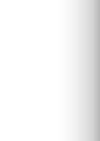The aim of this study is to investigate the changes in fatty acid composition in Nannochloropsis oculata microalgae under physicochemical stresses (light intensity and salinity). In this regard, the growth rate, the amount of chlorophyll and carotenoid, the approximate analysis and the profile of fatty acid changes of marine microalgae N. oculata under two mutual stresses of salinity (15, 25 and 40 g/l) and light intensity (Lux 1500 and Lux 10000) which at the end of the phase Logarithms were applied are examined. The results showed that according to the application of stresses after the completion of growth, there was no significant difference in the growth rate in different treatments (P>0.05). Also, despite the fact that the highest amount of lipid was obtained under the salinity treatment of 40 g/l and the light intensity of Lux 1500, the highest amount of saturated fatty acids (SFA) was obtained under the treatment of salinity of 15 g/l and the light intensity of 10000 Lux, the highest amount of monounsaturated fatty acids (MUFA) under 25 g/l treatment and 10000 Lux light intensity and the highest amount of polyunsaturated fatty acids (PUFA) under 15 g/l treatment and 10000 Lux light intensity were obtained after 4 days of stress. Considering the effectiveness of fatty acid compounds in N. oculata microalgae, by controlling the cultivation conditions, the maximum amount of desired fatty acids can be achieved in accordance with the desired goals.
Article Type:
Original Research |
Subject:
Aquaculture Received: 2023/01/9 | Published: 2023/01/31
Send email to the article author
























































